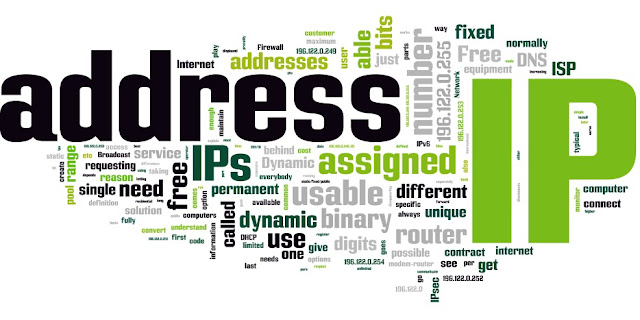[ IP ] What is IP addresses and type
What is IP addresses and type
Short for Internet Protocol address, an IP or IP address is a number (example shown right) used to indicate the location of a computer or other device on a network using TCP/IP. These addresses are similar to those of your house; they allow data to reach the appropriate destination on a network and the Internet.
IPv4 vs. IPv6
As the Internet and technology evolve, there has been an increasing demand for IP addresses. To help meet the demand for IP addresses, there are two types of addresses used today, IPv4 and IPv6. Although you may only deal with an IPv4 address in your local home, school, or small office you should also be aware of IPv6 addresses for when you encounter them.
Example of an IPv4 address:
45.79.151.23
Example of an IPv6 address:
2601:681:4200:c5c0:516:f0bb:ac3b:46bd
IP address classes
With an IPv4 IP address, there are five classes of available IP ranges: Class A, Class B, Class C, Class D and Class E, while only A, B, and C are commonly used. Each class allows for a range of valid IP addresses, shown in the following table.
| Class | Address Range | Supports |
|---|---|---|
| Class A | 1.0.0.1 to 126.255.255.254 | Supports 16 million hosts on each of 127 networks. |
| Class B | 128.1.0.1 to 191.255.255.254 | Supports 65,000 hosts on each of 16,000 networks. |
| Class C | 192.0.1.1 to 223.255.254.254 | Supports 254 hosts on each of 2 million networks. |
| Class D | 224.0.0.0 to 239.255.255.255 | Reserved for multicast groups. |
| Class E | 240.0.0.0 to 254.255.255.254 | Reserved for future use, or Research and Development Purposes. |
Ranges 127.x.x.x are reserved for the loopback or localhost, for example, 127.0.0.1 is the loopback address. Range 255.255.255.255 broadcasts to all hosts on the local network.
IP address breakdown
Every IP address is broken down into four sets of octets and translated into binary to represent the actual IP address. The below table is an example of the IP 255.255.255.255. If you are new to binary, we highly recommend reading our binary and hexadecimal conversions section to get a better understanding of what we're doing in the below charts.
| IP: | 255 | 255 | 255 | 255 |
| Binary value: | 11111111 | 11111111 | 11111111 | 11111111 |
| Octet value: | 8 | 8 | 8 | 8 |
For an example, let's break down the IP "166.70.10.23" in the following table. The first row contains the separate sections of the IP address, the second has binary values, and the third row shows how the binary value equals the section of the IP address.
| IP: | 166 | 70 | 10 | 23 |
| Binary value: | 10100110 | 01000110 | 00001010 | 00010111 |
| Numerical value: | 128+32+4+2=166 | 64+4+2=70 | 8+2=10 | 16+4+2+1=23 |
Automatically assigned addresses
There are IP addresses that are automatically assigned (dynamic allocation) when you set up a home network. These default addresses are what allow your computer and other network devices to communicate and broadcast information over your network. Below are the most commonly assigned default addresses for home networks.
| 192.168.1.0 | 0 is the automatically assigned network address. |
| 192.168.1.1 | 1 is the commonly used address used as the gateway. |
| 192.168.1.2 | 2 is also a commonly used address used for a gateway. |
| 192.168.1.3 - 254 | Addresses beyond 3 are assigned to computers and devices on the network. |
| 192.168.1.255 | 255 is automatically assigned on most networks as the broadcast address. |
If you have ever connected to your home network, you should be familiar with the gateway address or 192.168.1.1, which is the address you use to connect to your home network router to change its settings. Another common IP range that may be used is 10.0.0.3-254.
Getting an IP address
By default the router you use will assign each of your computers their own IP address, often using NAT to forward the data coming from those computers to outside networks such as the Internet. If you need to register an IP address that can be seen on the Internet, you must register through InterNIC or use a web host that can assign you addresses.
Anyone who connects to the Internet is assigned an IP address by their Internet Service Provider (ISP), which has registered a range of IP addresses. For example, let's assume your ISP is given 100 addresses, 109.145.93.150-250. In this range, the ISP owns addresses 109.145.93.150 to 109.145.93.250 and can assign any address in that range to its customers. So, all these addresses belong to your ISP until they are assigned to a customers computer. In the case of a dial-up connection, you are given a new IP address each time you dial into your ISP. With most broadband Internet service providers, you are always connected to the Internet your address rarely changes. It remains the same until the service provider requires otherwise.
The above picture is taken from our "How do computers connect to each other over the Internet?" document and gives a good overview of how a computer can talk to another computer over the Internet using an IP address.
Other internet protocols
An IP is just one type of protocols the Internet and networks use to communicate. There are dozens of other protocols that are also used for communication between other programs and devices. For example, SMTP (Simple Mail Transfer Protocol) is a protocol to send e-mail from one computer to another computer. See our protocol page for a list of other popular protocols.

![[ IP ] What is IP addresses and type](https://blogger.googleusercontent.com/img/b/R29vZ2xl/AVvXsEiWWDvMUqAi2A-_8-Be7TGKiCuR8f7B_jZhXlvPRzzyI4FMw2Go8xyQFQTBFUG2ImpuRrF4Qzh7OLXq_gw_Fwuk8_Huci3tkTWusKFucBRsuXeOPH4VBPbLwpRxXGDDmd1YF1JvOYZzBZRq/s72-c/192.168.0.1.1.jpg)
![[SEO] How To Fix Structured Data Date Problems In Blogger](https://blogger.googleusercontent.com/img/b/R29vZ2xl/AVvXsEgKd3z7GpLKGiXeG-3F-F5iOH69HHJoNu49-gR9a1qSLP6HoNI1kO2rAFNDVPZyG7GN7EdROLYYGo4nC4P9h7hxbJ0bsZXppNooAS2cdWYlrY5Gx3jyD8p2B7xCq6iiSVxfVp-Jx86hz5t2/s72-c/FJegn1480686429.jpg)


![[ ROUTER ] How to Configure a Simple Static Routing in Packet Tracer](https://blogger.googleusercontent.com/img/b/R29vZ2xl/AVvXsEjl_q6yeNY8tUGaicHyAUZV9F4bpzs74SthaIqbWSk8fbcA1Ceu4FE1aD3jEhA-q9YSOwxKFY_X1xrY2xb5GB4mLbMOftIP17d3yREF0FfE7rsEm7FhvCQzT0ItNfVXkJZ4A98kzvdBw5hF/s72-c/jdZkw1480162390.jpg)



No comments: